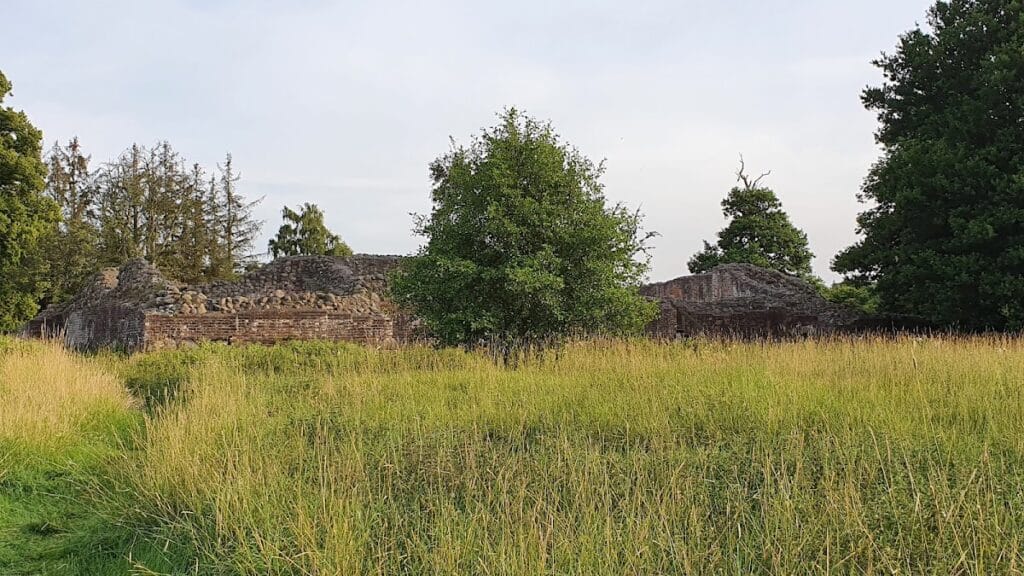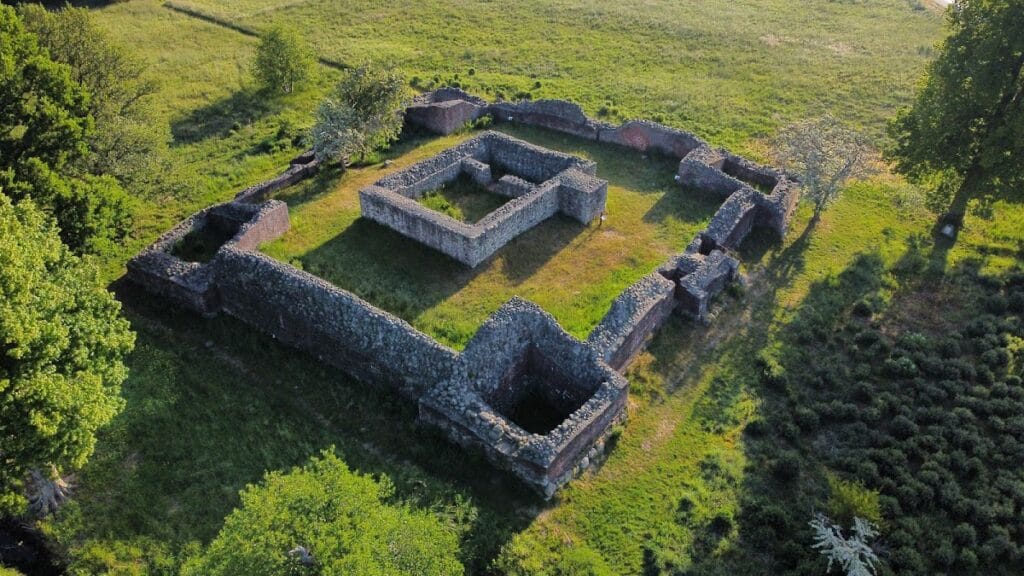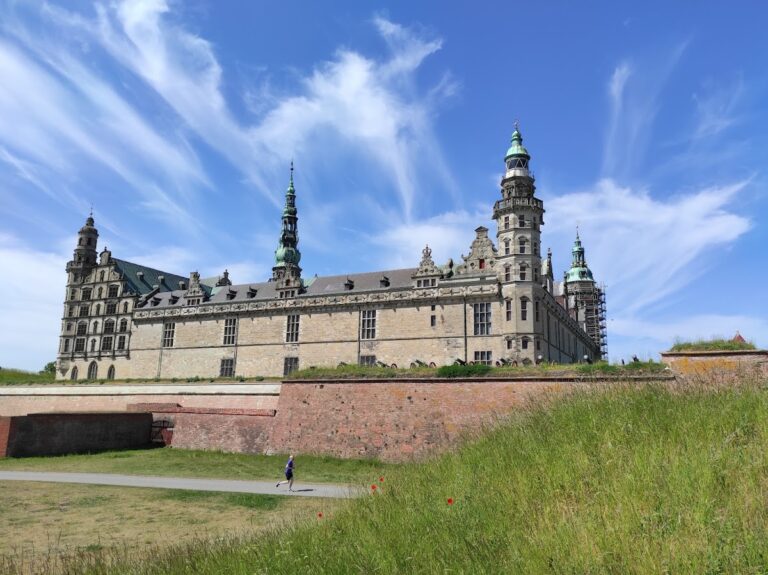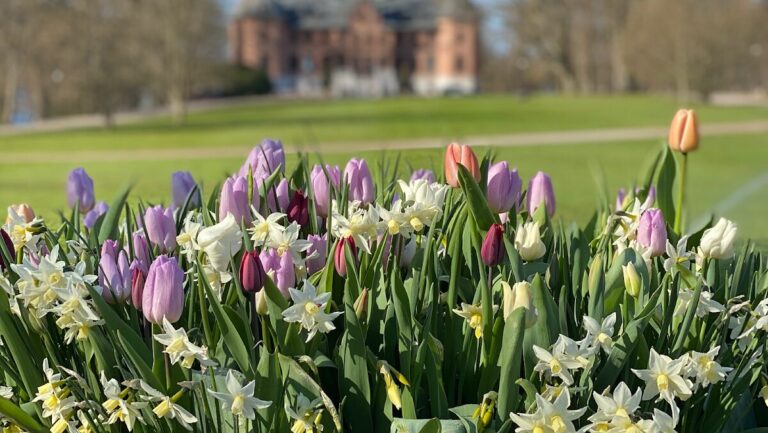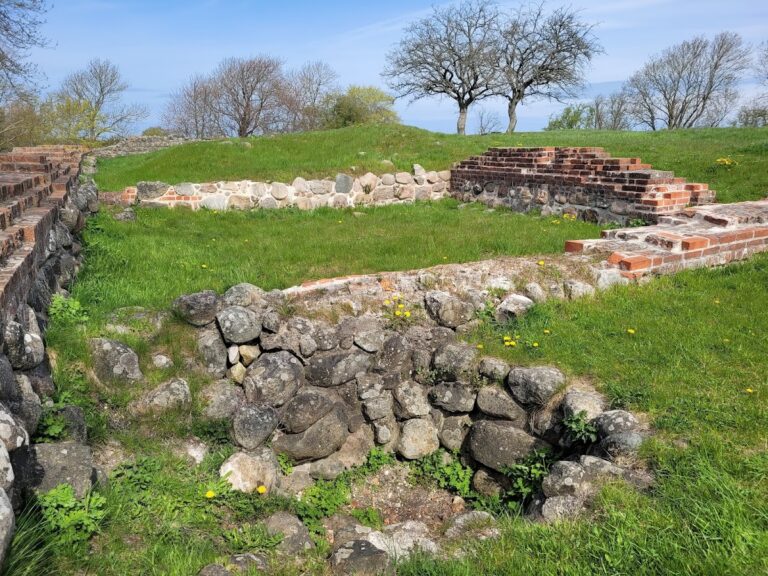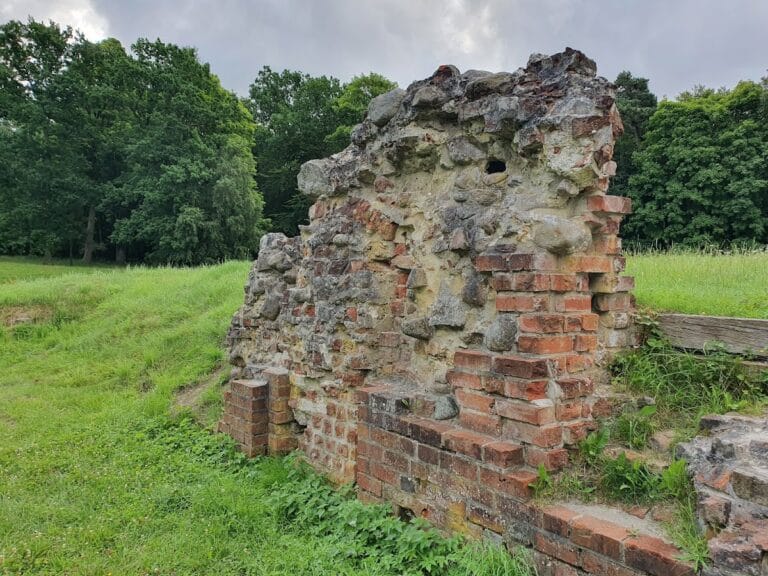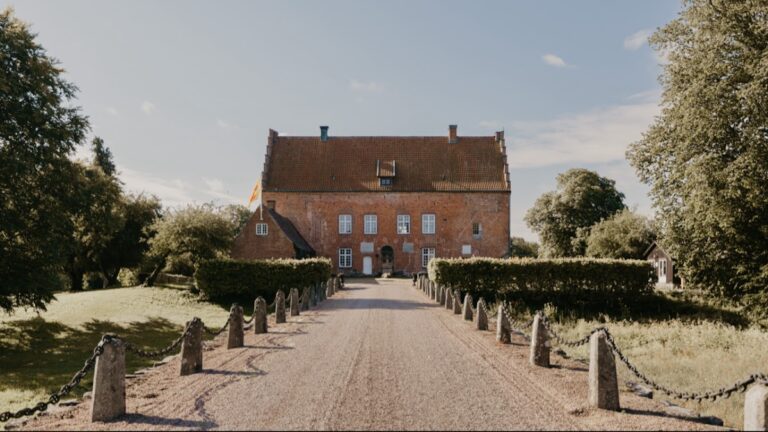Gurre Castle: A Medieval Danish Fortress in North Zealand
Visitor Information
Google Rating: 4
Popularity: Low
Google Maps: View on Google Maps
Official Website: natmus.dk
Country: Denmark
Civilization: Medieval European
Remains: Military
History
Gurre Castle is a medieval fortress built by the Danish kingdom, located near the village of Gurre within the municipality of Helsingør, Denmark. Positioned on the shores of Gurre Lake in the region of North Zealand, it played an important role in Danish royal affairs between the late 13th and early 16th centuries.
The initial construction of Gurre Castle likely took place during the reign of King Erik Menved, who ruled from 1286 to 1319. The original structure centered on a robust main tower, or donjon, built upon a natural hill, with an outer enclosure to the north separated by what was probably a moat. This early phase established the castle’s defensive and residential core.
In the 1360s, the castle underwent a substantial transformation under King Valdemar Atterdag, who reigned from 1340 to 1375. He expanded the fortress by adding a protective ring wall with four corner towers around the central donjon. Furthermore, the outer bailey was enlarged with new brick buildings, constructed on raised artificial mounds to adapt to the marshy terrain. Valdemar Atterdag spent his final days at Gurre Castle, passing away there on October 24, 1375.
During the 14th and early 15th centuries, Gurre Castle functioned not only as a royal residence but also as a site where coins called “Gurre Gros” were minted in the 1430s. These coins featured a crown on one side and the letter “E” on the other, and the mint was referred to as “Castrum Gorge,” indicating the castle’s administrative significance in this period.
Ownership of the castle changed in the early 16th century. It was officially transferred to the Danish Crown in 1525, briefly exchanged to Bishop Joakim Rønnow in 1534, before returning to royal possession in 1535. After this point, the castle fell into neglect. In the mid-1500s, during the reign of King Frederik II, the structure was reportedly dismantled, with its stones reused for other building projects.
Gurre Castle also holds a place in Danish cultural heritage through its association with local legend. The castle features in the folklore surrounding King Valdemar Atterdag and his mistress Tove Lille, inspiring literary works by the poet J.P. Jacobsen and the musical composition “Gurrelieder” by Arnold Schönberg. These stories have contributed to the site’s enduring mythical status within Danish history.
Archaeological interest in Gurre Castle began in the early 19th century, starting with small excavations in 1817. More extensive digs were carried out in 1835, during which large amounts of earth were removed to reveal walls and foundations. Investigations continued through the late 19th and early 20th centuries, notably between 1936 and 1939 when restoration work brought to light additional defensive structures. Minor archaeological projects and surveys have taken place since then, including those linked to infrastructure developments around the year 2000. Today, the ruins are protected as a listed ancient monument, preserving the site’s historical legacy.
Remains
The visible remains of Gurre Castle primarily consist of the central donjon and portions of the surrounding ring wall dating mostly from the castle’s later medieval phase. The site’s overall plan includes a roughly rectangular area enclosed by defensive walls with corner towers, situated on an elevated natural foundation. The younger castle’s ring wall enclosed an area about 230 by 180 meters in size, outlining a compact fortress complex.
At the core is the central tower, preserved to about three meters in height, constructed without any entrance at ground level. This design meant access was only possible from the upper floors, serving as a secure last refuge during sieges. Surrounding the main tower is a smaller ring wall featuring four corner towers, which remain standing up to 3.5 meters tall in some places. These curtain walls, built of stone and brick, once enclosed the castle’s heart.
Beyond the inner defenses lies the outer bailey, where several brick buildings were erected on man-made mounds to elevate them above the marshy ground. One of these structures reached approximately nine meters in height; although partially collapsed and now covered in peat, its substantial walls remain. The largest of these buildings measured 48 by 15 meters and featured a three-aisled plan. Archaeologists discovered its stone foundation included a base for a tiled stove from the 14th century, with remains of charcoal layers and fragments of cylindrical stove pots. The two side aisles inside this structure had tiled floors, likely serving as quarters for the royal cavalry, while the middle aisle did not contain tiles. It appears that an uncertain extension was later added to the building’s eastern end.
Another brick construction within the bailey measures 10 by 17 meters and contains a tiled floor, indicating careful craftsmanship and comfort. These buildings demonstrate the castle’s function as a place of residence and military organization during its peak use.
Outside the main defensive walls, several specialized facilities were located nearby. This area included a brick kiln northwest of the castle near Gurre Lake, used for producing the bricks that formed much of the castle’s construction. A smithy was positioned just outside the northeastern corner of the ring wall, close to the lake shore. Excavations here uncovered iron nails, rivets, bronze fragments, and slag from metalworking, illustrating active craft and maintenance at the site.
A lime kiln, featuring a rectangular chamber approximately 4.5 by 6 meters with three fireboxes made from tightly fitted monk bricks (large rectangular bricks commonly used in medieval structures), was also uncovered in this outer zone. This facility was essential for producing lime mortar needed in construction and repairs.
To the east of the castle, the foundations of St. Jacob’s Chapel remain. Dedicated to the Apostle James, it received holy relics in 1364, gifts from the pope in Avignon to King Valdemar Atterdag. While no burials have been found within the chapel area, its stone foundation marks the site of this religious building connected to the castle’s community.
During restorative work between 1936 and 1939, a well was discovered within the central tower, providing water within the fortress. Additionally, paved surfaces were identified beneath a nearby road during excavations around 2000, indicating the presence of former pathways or courtyards linked to the castle complex.
Together, these structural remains and archaeological finds illustrate Gurre Castle as a multifaceted royal stronghold, combining residential, administrative, military, industrial, and religious functions across centuries of Danish medieval history.

